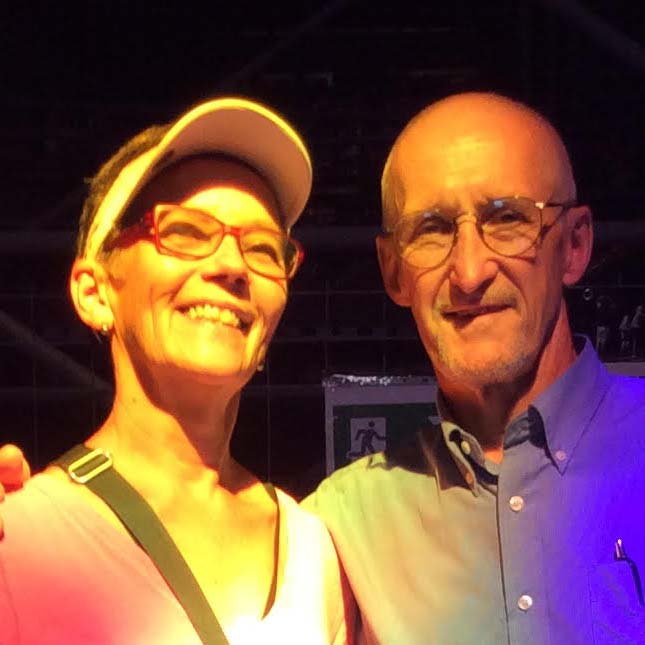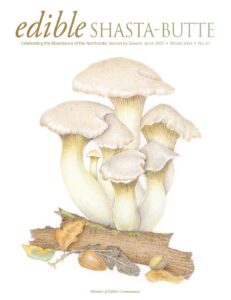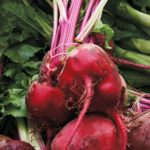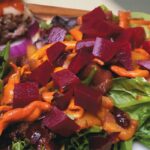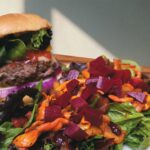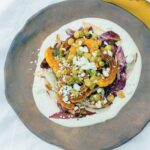Fall Visitors Meet Thousands of Pumpkins at Hunter Orchards
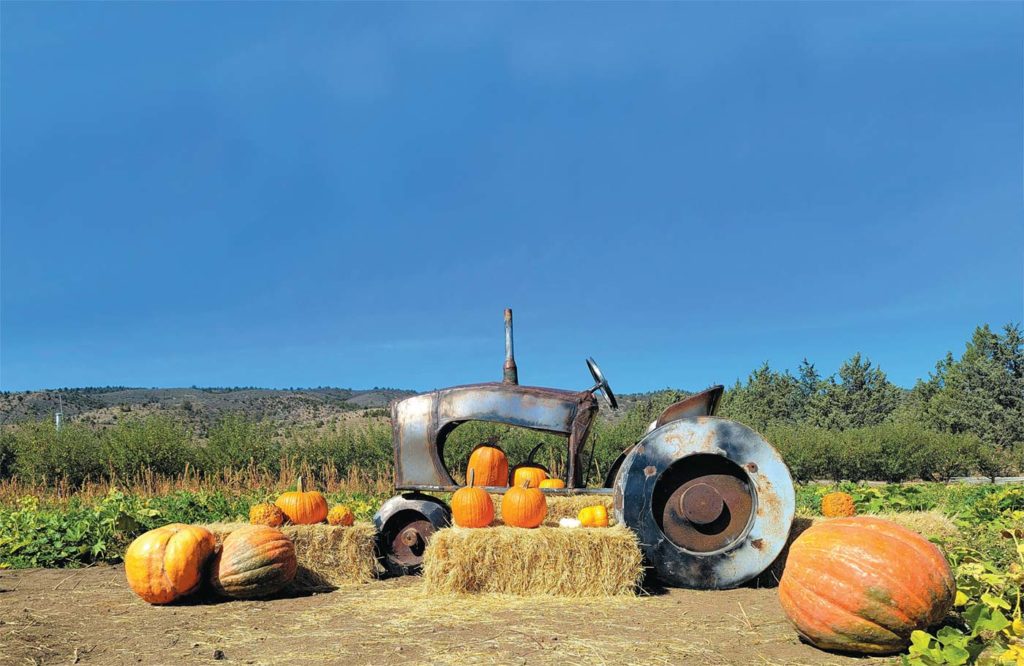
What started as a small patch established by John and Marie Hunter in the 1980s has become a beloved fall community tradition. Now with three acres of pumpkins, a kid’s hay maze, live music on the weekends, and a country store, people enjoy a great day out here on our farm with plenty of fall photo ops!
It is not officially fall until you’ve walked around a pumpkin patch and hunted down the perfect pumpkin. Out at Hunter Orchards, visitors choose from a generous selection of pumpkins, squash, and gourds grown by our family. Whether they prefer mini, enormous, or somewhere between, to use them plain, carved, or cooked and baked, there is a pumpkin for all tastes. What started as a small patch established by John and Marie Hunter in the 1980s has become a beloved fall community tradition. Now, at its fortieth anniversary, with three acres of pumpkins, a kid’s hay maze, live music on the weekends, and a country store, people enjoy a great day out here on our farm with plenty of fall photo ops! Although the finished displays may mask the prep that goes into this pumpkin patch every year, preparation begins in early May. We’ve learned a lot of lessons over the years, including tips for picking perfect pumpkins.
IT STARTS IN MAY
In May we spend long days maintaining and establishing the pumpkin patch. One thing I love about this process is that working does not feel like work when you are having fun and watching the patch grow. I work the land to ensure the soil is loose and well-draining. I apply a layer of green fertilizer, as pumpkins can be heavy feeders. Then I create the rows, ensuring the right spacing to give room for growth. Pumpkins also need a lot of water, so we establish our irrigation system. We previously began the process by laying handline sets through all of our patch rows. This year we have made some adjustments and now use a drip system. A drip system is a type of micro irrigation system with drip emitters, which saves water and builds nutrients by dripping the water slowly into the roots of the plant. This allows us to have a healthier and more successful growing season. We usually plant the pumpkin and squash patch during the first week of June, but it all depends on the daily temperature, which we monitor closely. We try our best to ensure that the pumpkin patch is planted within the first ten days of June; otherwise, the patch may not be ready for opening day on October 1, which is very important to both the community and us.
To avoid having early plants gobbled up by squirrels and rabbits, we decided to start all the pumpkins and squash in our greenhouse this year. We started various pumpkins, from traditional jack-o-lantern types to more decorative varieties. We try to mix it up every year and begin by buying packets of organic non-GMO seeds we like and also those that customers request. We also harvest the seeds from our own pumpkins to be replanted the following year. Our favorites are definitely the odd-looking ones! Some of the varieties we grow are Atlantic Giants (the big guys), Jarrahdale (grey-blue), Caspers (white), Cinderella (varies in color, more fl attened but still round, for fairy tale displays and also excellent in soups, curries, and purees), Porcelain Doll Pink (light pink), Baby Boos (small, white), and Knuckle Heads and Warty Goblins (bumpy, warty texture). We also started all six varieties of our winter squash in the greenhouse. We estimated around 4,000 starts this year, which we transplanted outside to the moist, nutrient dense soil.
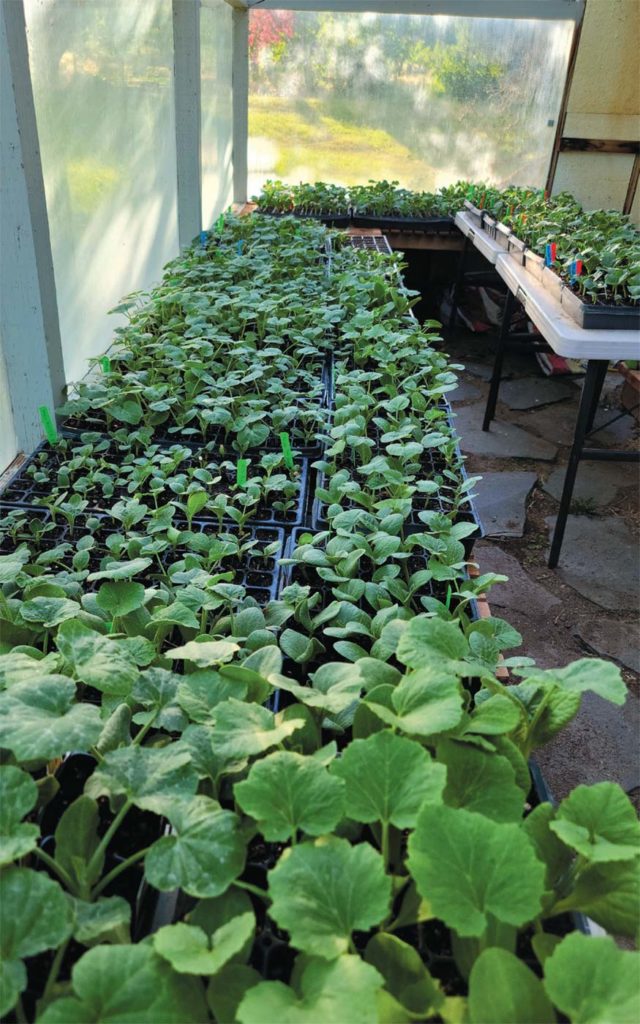
To avoid having early plants gobbled up by squirrels and rabbits, we decided to start all the pumpkins and squash in our greenhouse this year.
We try our best to ensure that the pumpkin patch is planted within the first ten days of June; otherwise, the patch may not be ready for opening day on October 1, which is very important to both the community and us.
PICK TIPS
We are often asked about tips for picking the best pumpkins and squash. In pumpkin selection, purpose is foremost. Specialty pumpkins will have much thicker flesh, making them harder to carve. I recommend sticking to the jack-o-lantern types for carving, then decorating with the fun, unique ones. White pumpkins often have a jacko- lantern-like thickness as well. Many customers “set up” their display right in the field while picking their pumpkins out. This is a great idea to ensure you have just what you need. We also offer decorative corn, cornstalks, and a variety of gourds to help you create the picture-perfect fall décor display. For eating, it is best to pick up the squash and feel its weight in your hands. It should feel particularly heavy for its size. The skin of the squash should be dull and matte. Also, consider how you want to cook or bake with it. A pumpkin soup and a pumpkin pie might turn out better from different varieties of pumpkin. We are more than happy to point you to the right squash that meets your needs.
FALL IS A-MAZING!
At some point in the summer, the earlier, the better, we have to secure the delivery of hay bales for the kid’s pumpkin patch maze. We don’t usually get them as early as possible, but it’s good to ensure we know where we will be getting them from, as we know that is a favorite pumpkin patch feature. We also start to schedule school field trips and clean and prep the open market barn for the pumpkin patch store. While most people opt for the U-pick pumpkin option, we pre-pick a variety of pumpkins and have them available in the pumpkin patch store, located in our open market barn. Our patch store also features local farmers and craftspeople—everything we offer in the store is grown or handmade in Siskiyou County. Visitors choose pork (raised right next door!), a variety of snacks, organic produce, dried flowers, and provisions such as handmade soap.

Our favorites are definitely the odd-looking ones!
AT THE PATCH
In mid-September, if it’s not too hot and the fields look good with the pumpkins plentiful and right-sized on the vines, we know it’s time to reduce the water. September also directs us to phone calls and emails from people wanting to visit the pumpkin patch. We have many local schools come down on field trips, where they learn about the pumpkin patch’s history and different types of fruits. This is one of my favorite times at the pumpkin patch, because I get to see how happy and interested the kids are in the pumpkin patch and in the orchard as well. We also create a maze throughout the patch, which we do by hand and with a mower. After making the maze in the patch, we cut most of the pumpkins off the vines, for easy access to pick them up off the ground. We like to add visual interest to the pumpkin patch, such as our metal tractor, which was made by local artist Ralph Starritt. We harvest the winter squash late September and all through October, for the freshest produce. All of our squash is available for sale at the pumpkin patch store.
During October, we are super busy with the opening of the pumpkin patch. We are open every day from October 1-31, from 10 am-6 pm. This is one of my favorite times of the year, because I see the community come together with their family and friends. Last year at the pumpkin patch, we had Rescue Ranch come out for doggy adoption day. Doggy adoption day allows people to adopt a rescue dog, which then becomes a best friend. We also had a taco truck come out for a couple days so that people could get food and hang out at the pumpkin patch. This year we hope to have live music and a few special events at the patch a couple days throughout the month. If the apple trees produce enough fruit, we make our famous apple cider. We have struggled over the last few years to get a bountiful apple harvest due to various conditions, but we hope to improve our future harvests and offer our tasty apple cider soon. We know it is a local favorite.
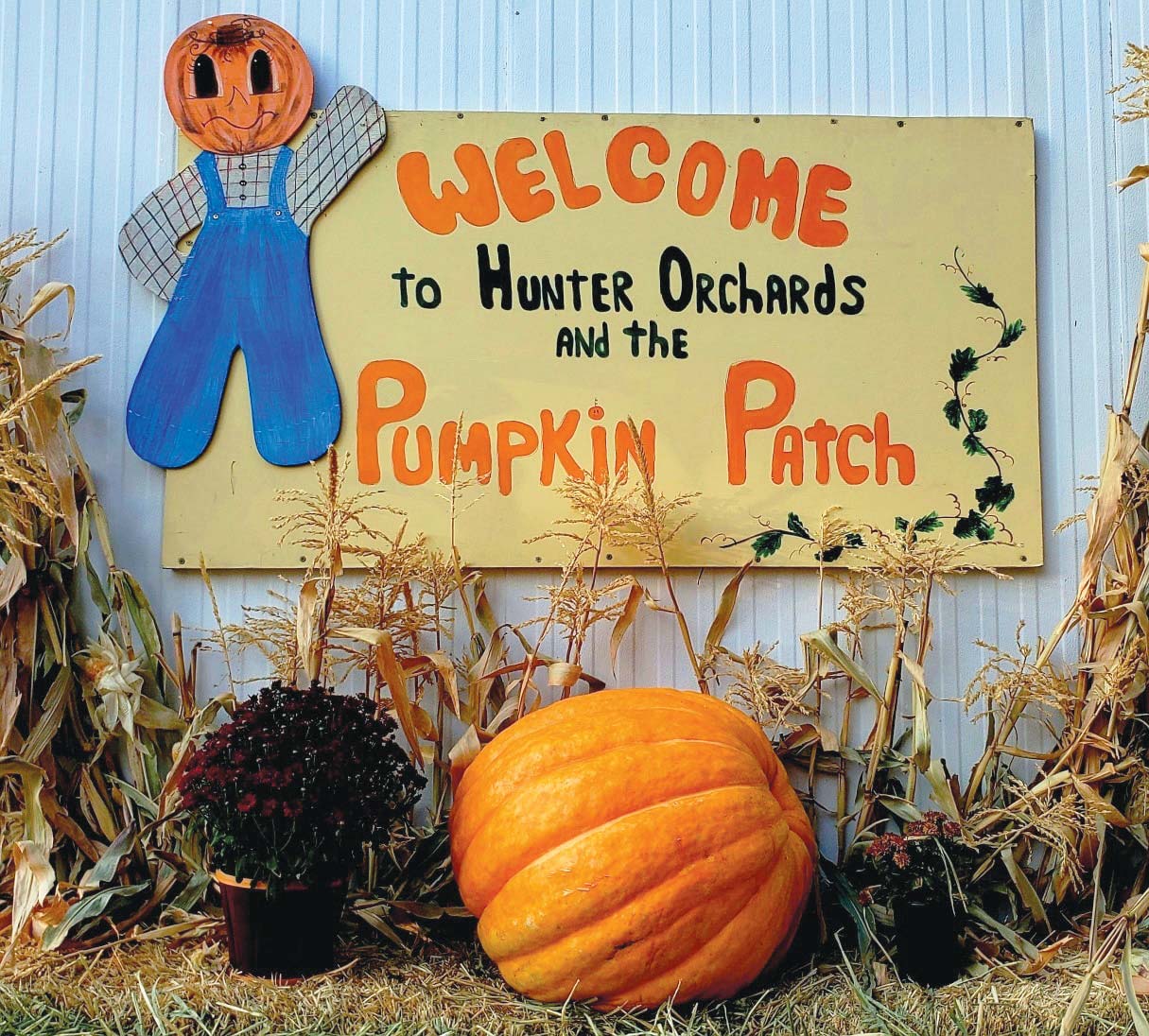
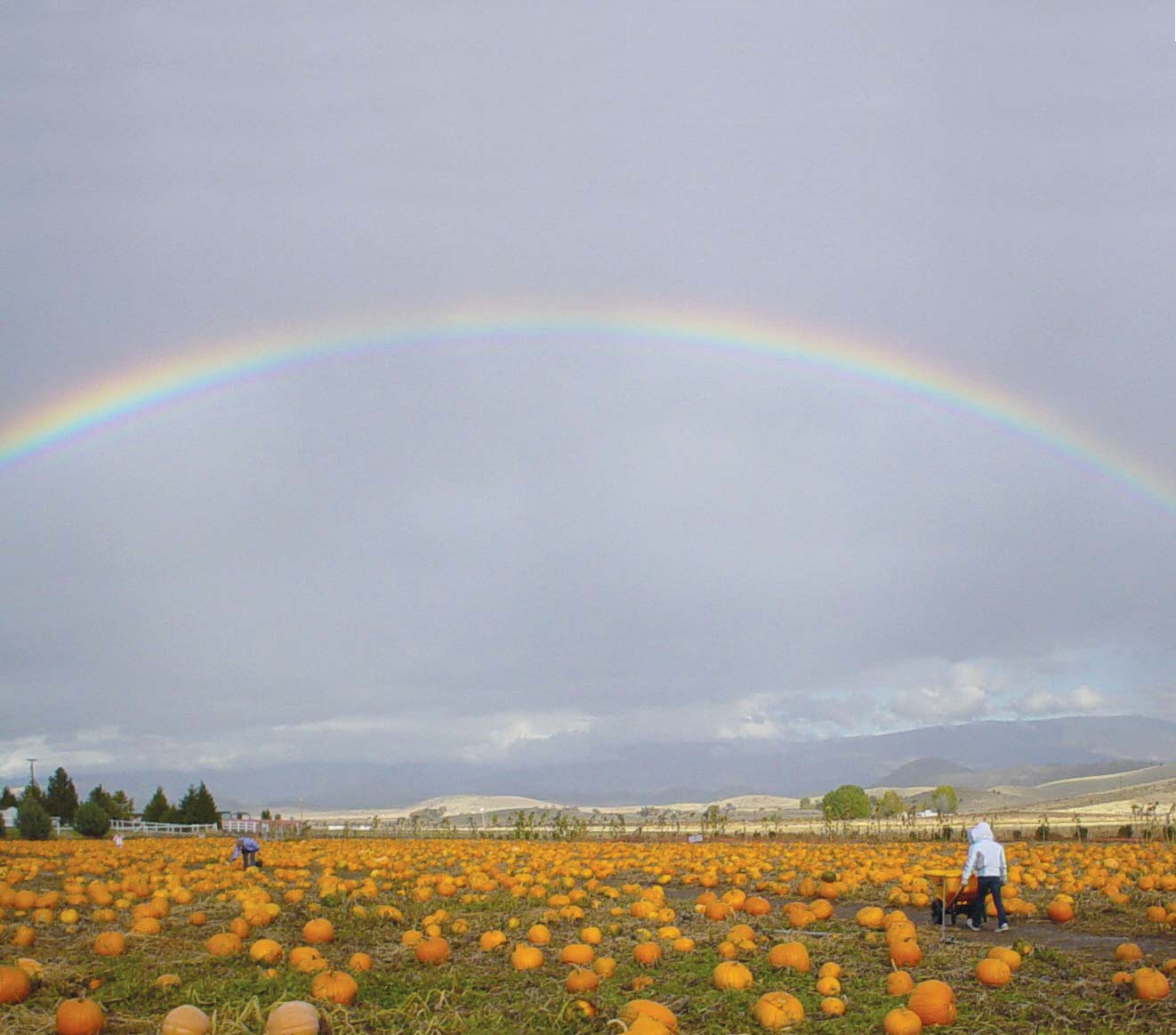
SHARING THE BOUNTY
If we have any pumpkins or squash left over at the end of the month, we open the patch for ranchers and farmers to come out and pick up pumpkins for their animals. We generally keep the store mostly set up during this time, so people can come to buy things they didn’t get the chance to buy during the season. Once the local farmers and ranchers have had their pick, we compost any remaining fruit, which often is not a lot, directly back into the soil.
The pumpkin patch is much more important to us this year, as we lost our entire orchard crop this year because of late cold weather. Farming is challenging. It is also a true labor of love, love for the crops we grow, a respect for the land, a tribute to our parents, grandparents and all of the fine people that have kept this farm running since the beginning. It is an investment into the future of our local food system, a commitment to our community. We will continue. We are already looking forward to next peach season.
Visitors who come to Hunter Orchards in the fall seek more than pumpkins! They delight in a fabulous fall photo shoot day, old-fashioned fun, and the perfect jack-o-lantern. We love getting to know all of our customers and learning how we can continue to improve the pumpkin patch to ensure it is the best experience for them and their family, and people freely introduce themselves and offer good new ideas through these conversations. They help us make future plans to expand the patch while keeping it authentic and family-friendly.
This is the third in a four-part series, in which the Ericksons describe seasonal changes and their activities each season as they farm their certified organic acres.
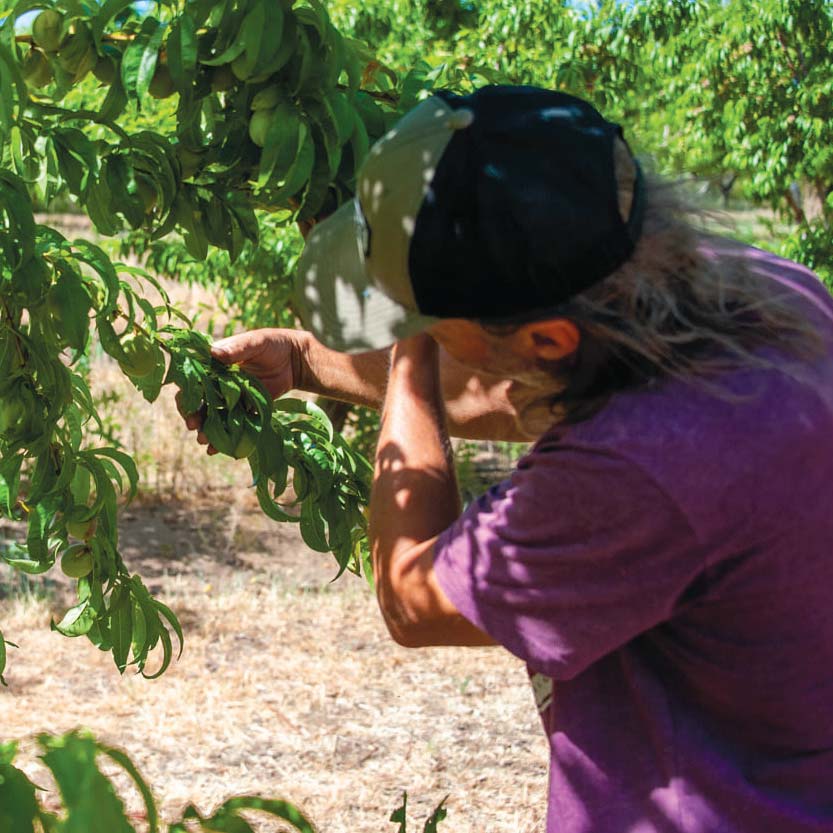
Erik and Julie Erickson own Hunter Orchards, in Grenada, just northwest of Mount Shasta, and they grow organic peaches, nectarines, apricots, apples, and pears, lavender, and heirloom pumpkins. Learn more about Hunter Orchards, including about their on-farm offerings, at hunterorchards.com and on their Facebook page: facebook.com/hunterorchards

